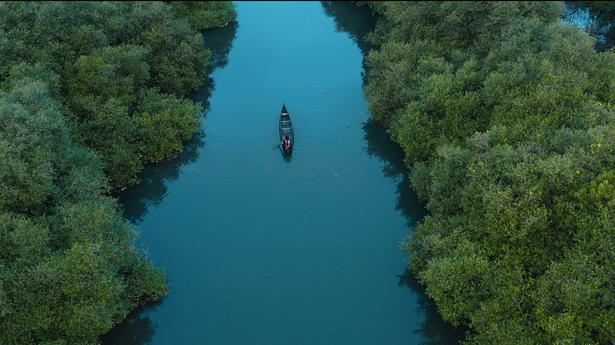Infrastructure projects and dumping of waste among key factors that resulted in decline of mangroves
Infrastructure projects and dumping of waste among key factors that resulted in decline of mangroves
Around 42% of mangroves in the ecologically-sensitive Puthuvype region in Ernakulam district has vanished over the last two decades, mainly owing to unchecked human interference, including large-scale construction and land-filling for urban development, according to a study.
What satellite images show
Researchers at the Space Applications Centre (SAC) under the Indian Space Research Organisation (ISRO) and the Kerala University of Fisheries and Ocean Sciences (KUFOS) used satellite images to study the rapid changes in the mangrove ecosystem.
The area around Puthuvype, which had a large mangrove cover, was the most affected due to infrastructure projects, including the International Container Transshipment Terminal and the LNG Terminal. Building bunds, dumping of waste, and disturbing the natural course of sea water were the other key factors that resulted in the decline of mangroves, according to Girish Gopinath, Associate Professor, KUFOS, and Anand Sahadevan, scientist, Space Applications Centre, who carried out the study.
Reasons for depletion
The LPG jetty built by Indian Oil Corportaion on the Puthuvype Coast
| Photo Credit: THULASI KAKKAT
The researchers said salt water supply to the mangroves was affected owing to constructions and other land-filling activities, resulting in the decline in mangrove cover. In the last decade, there was massive reclamation of land due to infrastructure projects, aquaculture operations, dredging for landfills, and construction of jetties. If massive land reclamation for infrastructure projects (oil and natural gas storage facility) continued in Puthuvype, then the island might be deprived of its ecological importance, they said.
Also read: Work on cooking gas import facility at Puthuvype over
The study pointed out that anthropogenic activities had triggered the rate of change in the function of mangrove ecosystems in coastal urban areas of Ernakulam over the last few decades. The huge mangrove area was being invaded for urban developmental activities, it said.





